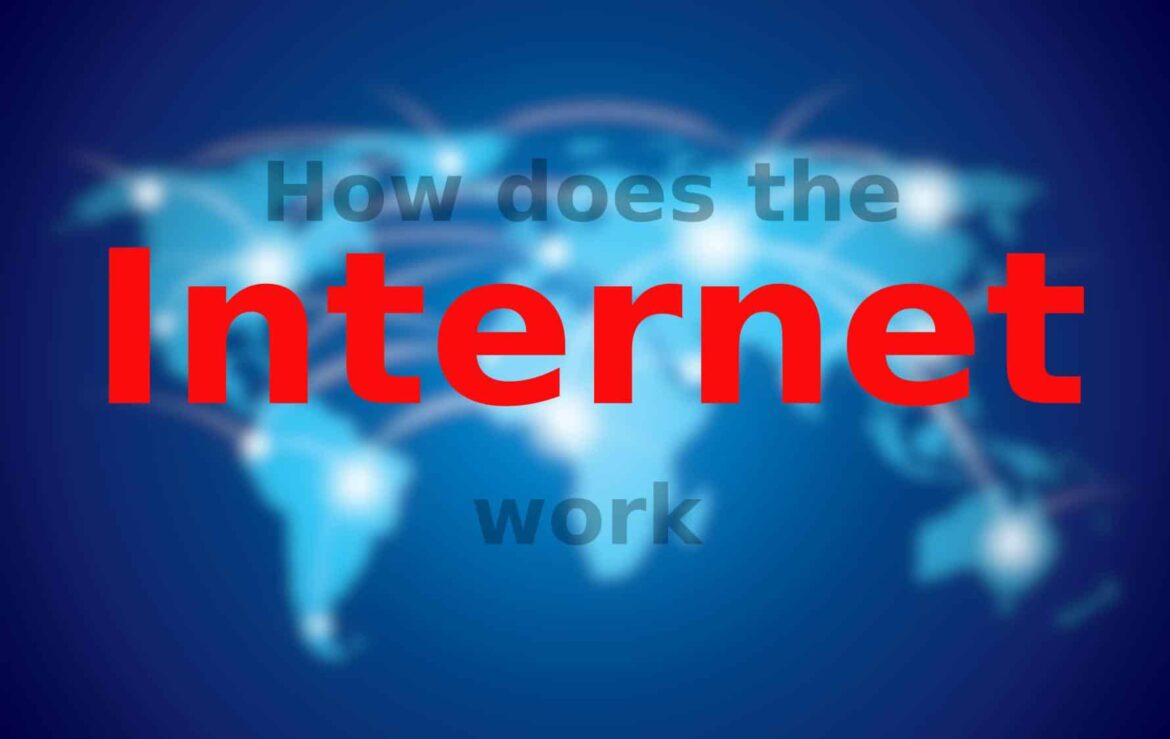Using the Internet is an integral part of everyday life these days. But how does the net of nets actually work?
What is the Internet actually?
Simply put, the Internet is an interconnection of many computer networks that exchange data with each other and thus enable the use of various services such as e-mail or WWW. This is also commonly referred to as surfing. Historically, the Internet grew out of the Arpanet of the U.S. Department of Defense, which was created at the end of the 1960s. The intention was to use the capacities of several mainframes together in a meaningful way and began to connect universities and research institutions.
- The pivotal points for data exchange and thus an important part of the Internet are the Internet nodes. These are distributed all over the world and forward data to each other. As a rule, several, sometimes hundreds, of service providers are connected to an Internet node. Within the network node, data is exchanged among the providers. Measured by the amount of data traffic, the world’s largest Internet node is located in Frankfurt am Main, Germany, where it is distributed across some 19 data centers.
- Providers, in turn, enable their customers, such as companies or private households, to access the Internet by providing corresponding connections such as DSL or LTE.
- Many companies operate their own networks, called intranets, which become part of the Internet when the connection to the provider is established. While private individuals are usually only users and call up information or services, many companies offer Internet services themselves. In addition to the general provision of information, these include, for example, online stores, cloud storage or booking portals.
- The actual data transmission between the Internet nodes and the providers takes place worldwide via fiber optic cables, which enable high transmission speeds. Households or companies are usually connected by copper cable, radio and increasingly also by fiber optics. To ensure that everything runs smoothly, so-called protocols are used to regulate the way in which data is exchanged.
- For example, the Internet protocol family specifies that the data to be transmitted is broken down into small packets at the sender, then transmitted and reassembled at the receiver.
- To ensure that a data packet knows where it comes from and where it must be sent, each computer involved in the communication is given a unique address, the IP address. This consists of four blocks of digits separated by dots. Since hardly anyone can remember the IP addresses of the Internet pages visited or other services, there is the Domain Name System (DNS). This allows the use of meaningful names for web pages, or more precisely Internet servers, on the Internet instead of IP addresses. These are known as Internet addresses, WWW addresses or URLs.
What happens when I access a web page?
Calling up an Internet page is just one of countless use cases on the Internet. However, this example can be used to simply explain how communication on the Internet works. This is the basic principle of how the Internet works.
- When you enter a URL in the browser, a request is sent to your provider when you press the Enter key. The provider first resolves the name, i.e. converts the name into the IP address of the target server. The target server is the server on which the web page you are looking for is stored.
- For name resolution, the provider uses one or more special servers. These are called DNS servers because they have only this one task. Simply put, DNS servers keep a directory of all Internet sites and their IP addresses, like a dictionary.
- Once the IP address of the target server has been determined, the request is forwarded via the Internet nodes to the web server on which the page being searched for is located. Since the Internet spans the entire world like a spider web, there are also different paths that the data packets can take. To find the optimal path, all networks are interconnected by routers. A router receives data packets and then decides where to forward them.
- After the request has reached its destination, the server responds and returns the contents of the Internet page. These must now find their way to the computer from which you made the request. For this to work, the data packets contain not only recipient information, but also the IP address of the sender. The procedure is the same: The response packets shimmy from network to network via the routers and finally reach your computer. There they are assembled and the web page you are looking for is displayed in the browser.
When was the WWW invented?
The WWW consists of many billions of web pages and continues to grow every day. As explained in the last chapter, the WWW is very easy to control with just a few mouse clicks. But who invented the WWW in which year?
- The most important ideas for the invention of the WWW with its user-friendly communication came from the British physicist Tim Berners-Lee. This scientist was in his mid-thirties at the time and worked at the CERN nuclear research center near Geneva, Switzerland.
- Berners-Lee was an information manager, and all he wanted to do with his invention was to simplify the exchange of data between the very different computers of his professional colleagues. After preliminary tests, the CERN directorate released the WWW to the public on April 30, 1993, and does not charge royalties for its use, as reported, for example, by the Frankfurter Allgemeine newspaper.
- So the WWW is free for all users and not very old at all, celebrating its 30th birthday in April of the year 2023.
